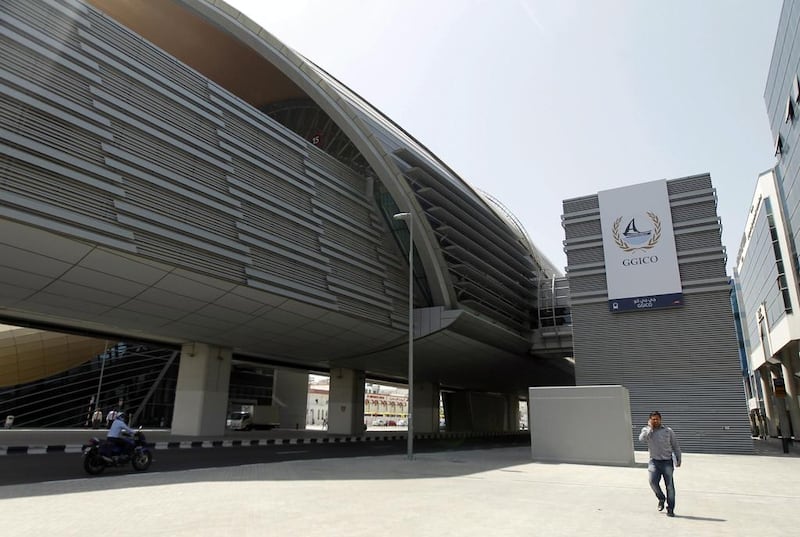DUBAI // Metro stations named after brands or companies, rather than their location, could become more common as transport bosses aim to raise revenue through advertising.
The Roads and Transport Authority (RTA) has so far earned almost Dh2 billion by selling naming rights to 13 of its stations on both the red and green lines as well as rents from retail outlets.
This has helped the authority cover 60 per cent of its operation and maintenance costs across the entire transport network.
The plan is to ensure 100 per cent of those costs are covered by 2017, said Abdul Mohsin Younes, chief executive of strategy and corporate governance at the RTA.
“Most public transport systems around the world operate at a loss,” he said. “In Dubai we have a plan to increase the commercial aspect by selling naming rights for metro stations and renting retail space in order to cover maintenance and operation costs.”
He said the RTA was planning to sell the names to five or six more stations, although there wasn’t a limit and no timeline.
It costs around Dh40 million to name a station after a company or government department for a 10 year period, although that fee can go up depending on both the location of the station and how developed the surrounding area is.
Mr Younes said the authority had strict criteria over what brands could use their names on stations.
“We are not going to sell the naming rights to any brands,” he added. “It should be within our culture and our values. We can’t brand a station ‘Marlboro’ for instance.”
The RTA has however given some stations unusual names, like ‘Danube’, and ‘GGICO’.
However, Mr Younes said the companies in question had offices nearby the station and therefore had ties with the geographic location.
Moreover, the 10-year naming rights deal was long enough, he said, to ensure that the public didn’t get confused over frequent changes.
“There is a minimum period of 10 years,” he said. “We can’t change it every year or people will get confused.”
The RTA has been working with Etihad Rail to identify possible locations for stations in Dubai to connect the emirate with the country’s national railway network.
Three have so far been identified: Maktoum Airport, Dubailand and an as-yet undeveloped plot in the Meydan area.
“These areas are relatively undeveloped, but they are part of the future development of Dubai,” said an RTA official.
“We have identified them to Etihad Rail but it will be their decision if they are built or not. Before that decision is made, there will need to be further studies.”
All of the stations would eventually have connection to the Dubai Metro.
“That is the eventual goal,” the official added. “We talk about integration and connectivity all the time. If someone is coming from Abu Dhabi by rail, when he arrives he needs to be able to continue on public transport.
“If he has to take a car or a taxi then you’re not doing much to improve congestion on the road.”
The initial stage of Etihad Rail will be a 270 kilometres freight line, linking Ruwais to the Shah gas field.
It is believed it will launch sometime this year.
The eventual goal is a mixed use rail network that links all seven Emirates, including a high speed passenger service between Dubai and Abu Dhabi.
The total development costs of Etihad Rail are estimated to be around Dh40 billion.
mcroucher@thenational.ae






